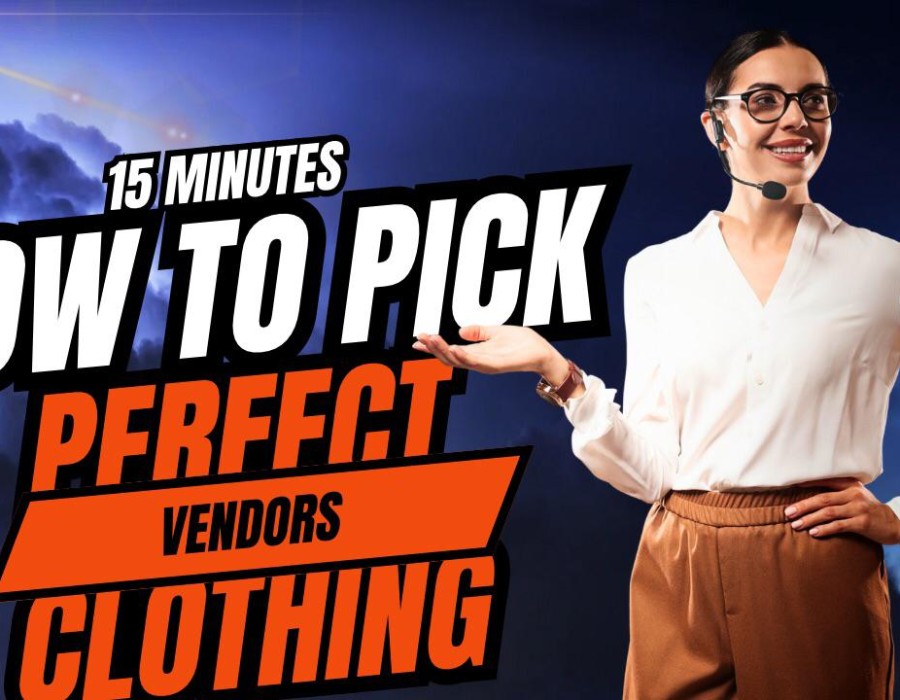Choosing the right clothing vendor is one of the most crucial steps in building a successful fashion business. Whether you are launching a streetwear brand or planning to pick the perfect clothing vendor for your fitness apparel line, your supplier will impact everything—from product quality to pricing and delivery times. In this article, we’ll guide you through the key factors to consider when selecting the best clothing vendor for your brand.
Why Choosing the Right Vendor Matters
Your clothing vendor plays a significant role in your business success. A reliable supplier ensures high-quality products, timely deliveries, and cost efficiency. On the other hand, a poor vendor can lead to delays, quality issues, and financial losses.
Types of Clothing Vendors
1. Wholesale Vendors
- Sell pre-designed clothing in bulk.
- Ideal for retailers who want quick inventory.
2. Private Label Vendors
- Offer customizable designs under your brand name.
- Great for brands wanting exclusive products.
3. Custom Manufacturers
- Produce clothing from scratch based on your specifications.
- Best for unique and original designs.
4. Dropshipping Vendors
- Ship directly to customers without you holding inventory.
- Low-risk and cost-effective option for startups.
Steps to Pick the Perfect Clothing Vendor
1. Define Your Needs
- What type of clothing do you need?
- What is your target audience?
- What’s your budget and order quantity?
2. Research Potential Vendors
- Use online directories like Alibaba, Faire, or SaleHoo.
- Attend trade shows and networking events.
- Seek recommendations from other fashion entrepreneurs.
3. Check Quality and Samples
- Always request samples before placing a large order.
- Assess fabric, stitching, and overall craftsmanship.
4. Compare Pricing and MOQs
- Minimum Order Quantity (MOQ) varies per vendor.
- Ensure pricing aligns with your profit margins.
5. Assess Communication and Responsiveness
- A good vendor should be easy to communicate with.
- Delays in responses can indicate future problems.
6. Verify Production Capacity
- Can they handle large-scale orders if your business grows?
- Ensure they can maintain quality consistency.
7. Check Reviews and References
- Look for testimonials from other businesses.
- Check for any history of late deliveries or quality issues.
8. Understand Payment Terms and Policies
- Clarify payment schedules and refund policies.
- Be cautious with vendors demanding full upfront payment.
9. Test Small Orders First
- Start with a small batch to evaluate reliability.
- Avoid committing to large orders initially.
10. Establish a Long-Term Relationship
- Building trust with your vendor leads to better pricing and priority service.
- Communicate regularly and maintain professionalism.
Common Mistakes to Avoid
- Ignoring sample testing.
- Choosing the cheapest option over quality.
- Overlooking vendor reputation and reviews.
- Not having a backup vendor.
- Failing to read contracts carefully.
Conclusion
Finding and picking the perfect clothing vendor requires careful research and strategic planning. Whether you choose wholesale, private label, or custom manufacturing, your supplier should align with your business goals. By following the steps outlined in this guide, you can ensure a smooth and profitable partnership with your vendor.
FAQs
1. How do I find reliable clothing vendors?
You can search online marketplaces, attend trade shows, or ask for referrals from industry peers.
2. What should I look for in a clothing vendor?
Key factors include quality, pricing, MOQs, production capacity, and customer service.
3. Should I choose a local or overseas vendor?
It depends on your priorities—local vendors offer faster shipping, while overseas vendors may provide lower costs.
4. What is the best way to negotiate with a vendor?
Always request quotes from multiple vendors and negotiate based on volume and long-term collaboration.
5. Can I switch vendors if I’m not satisfied?
Yes, but ensure a smooth transition by testing new suppliers before ending your current vendor relationship.





Comments